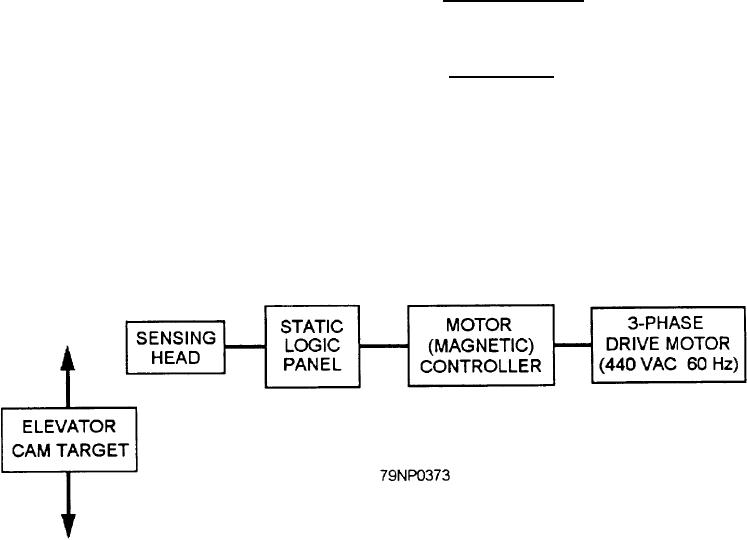
ELECTRONIC CONTROLLED
the elevator. Reversing the direction of rotation of the
ELEVATORS
pilot motor reverses the direction of movement of the
control piston of the pump. This allows the elevator to
be moved in the opposite direction.
Elevators installed on some new naval ships use
In another electric-hydraulic system, the pilot motor
static controls (no meting parts). In these elevators,
is a dc motor. The speed of the motor is varied by a
electronic devices perform the functions of relays,
rheostat-type control that gives an infinite number of
contractors, and limit switches.
platform speeds. These speeds range from
approximately 3 to 90 feet per minute. In installations
The electronic controlled elevator system
of this type, a rheostat control is provided on the
components (fig. 5-25) include the elevator cam target,
the sensing heads, the static logic panels, the motor
platform, and a duplicate control is provided in the
elevator machinery room.
(magnetic) controller, and a three-phase drive motor.
These system components function as follows:
Several methods are used for stroking the pump for
emergency operation two of which are as follows:
The elevator cam targets are steel cams or vanes,
mounted on the elevator platform to actuate the sensing
1. Declutching the "follow-up" control system
heads.
from the control stroking unit and manually holding in
a pushbutton. This action releases the electric motor
The sensing heads are mounted up and down
brake to free the machinery. A handwheel maybe used
the elevator trunk bulkhead. They are used for
to stroke the pump.
many elevator functions, such as slowing and
stopping, high-speed up and down stops, governing
2. Rotate the pilot motor armature by attaching a
overspeed, preventing overtravel, and door interlock
handwheel to an extension on the armature shaft, thus
functions.
stroking the pump.
Figure 5-25.--Block diagram of electronic controlled elevator system.
5-43

